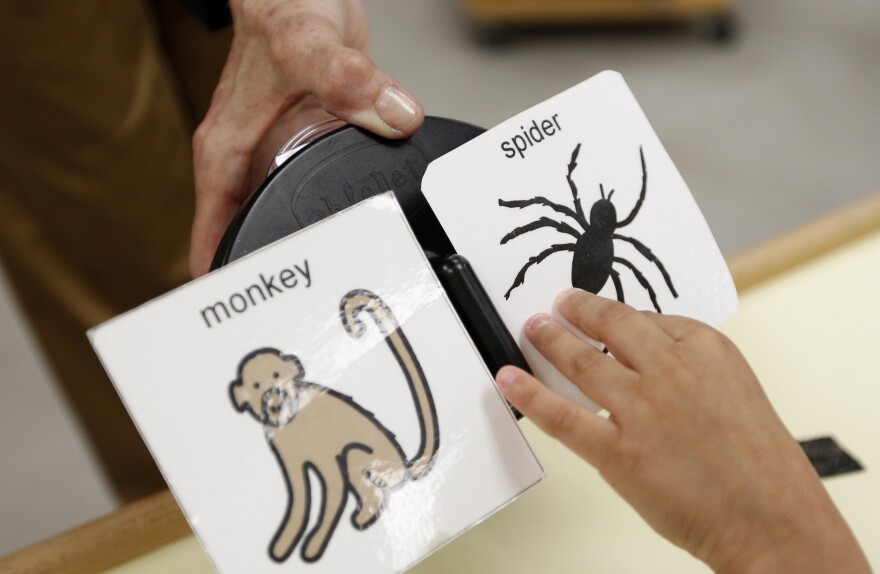Truth matters. Community matters. Your support makes both possible. LAist is one of the few places where news remains independent and free from political and corporate influence. Stand up for truth and for LAist. Make your year-end tax-deductible gift now.
This archival content was originally written for and published on KPCC.org. Keep in mind that links and images may no longer work — and references may be outdated.
LAUSD revisits how it refers students for special education services

Los Angeles school officials are changing the way that they screen students for special education services – a move partially motivated by financial pressures but also aimed at righting inequities in the way some students are educated.
Los Angeles Unified officials are now putting some special education referrals through extra scrutiny and looking for ways to better integrate students with special needs back into traditional classrooms.
The changes are coming in part as a response to the finding of a blue ribbon panel's finding last November that the district is likely identifying more students for special education programs than actually need services — a practice the panel said would be financially unsustainable if the district's enrollment continues to decline.
"It's like changing a culture of the district, of how we look at certain students," said associate superintendent Sharyn Howell, who heads L.A. Unified's Division of Special Education.
Making the right call on special education referrals is important. As a National Education Association policy brief puts it, incorrectly-labeled students are "likely to encounter limited access to rigorous curricula and diminished expectations" — and nationally, schools are more likely to misidentify students from racial and ethnic minority groups as needing special education services.
But in L.A. Unified, the financial costs of over-identifying students for special education services may also be starting to add up.
State education officials determine how much special education funding districts get based on their overall enrollment figures, not how many students with special needs they enroll.
And while the special education students now make up 13.5 percent of L.A. Unified's overall population — up 2 percentage points from 2004-05 — the district's overall enrollment has gone down by 100,000 students over the last six years.
"There's a big misconception that we get the money for each of the students we identify," Howell said. "It doesn't help you to identify more, and it certainly doesn't help the students."
Black special education students in L.A. Unified were disproportionally likely to receive their services in a segregated setting, such as a residential placement. Howell says the district is peer-reviewing all assessments and special education referrals for black students.
That's been the district practice for a few years already, Howell said, but it's had the impact of reducing over-identifications in these groups.
"We’re going to the schools and talking to them about, 'What have you offered to that student before you went down this route — why are you actually referring [them to special education]?'" Howell said. "What are the basic reasons for this student being referred? If it’s academic, what have we done to provide interventions academically? If it’s behavior, have we given any behavior interventions?' …
"That's something," Howell added, "that's going to be ongoing."
According to a presentation prepared for school board members on Tuesday, L.A. Unified officials have held parent trainings at more than 400 district campuses this school year. They're also opening more than 80 specialized preschool programs which help the youngest students with special needs transition to non-special education classroom settings.
Of the 12,000 L.A. Unified students referred for an initial assessment, the district found 86 percent of students to be eligible for special education, according to the slides district staff prepared for the board.
Special education students make up a greater share of L.A. Unified's enrollment than in districts like San Francisco, San Diego, Oakland or Long Beach. But Christine English, vice president of the California Concerned Parents Association, said the size of L.A.'s special education population lines up with national numbers.
English's organization is currently suing the state, saying they've failed to provide adequate oversight of special education programs. Certain districts, her organization charges, are over-identifying special education students. Other districts are leaving some students with special needs unserved. (The state denies the lawsuit's claims.)
LAUSD says the federal government hamstrings its efforts to serve special education students by only partially funding provisions of the Individuals with Disabilities in Education Act (IDEA), and English said she recognizes this.
But English responds that the district isn't effectively spending the funding it does receive; either way, she said, "these are students of a district first and they’re entitled to have access to the general education funding as a student of the district."
"The fact that they are a special education student," English added, "is a secondary issue."
Yet the blue ribbon panel's November report said officials can't be blind to the costs of providing special education.
"Students cannot be denied needed services because of these funding issues, but the additional unfunded costs produce severe budget pressure for the District," the report said.







